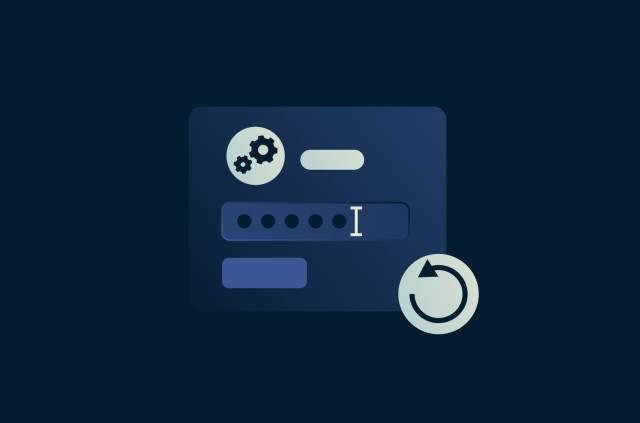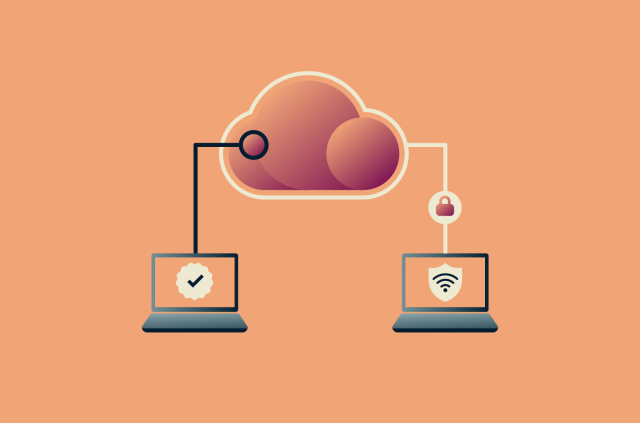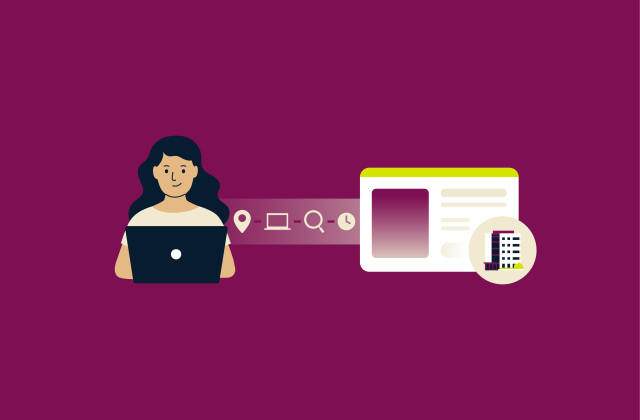What is HTTP/2 and how does it work?
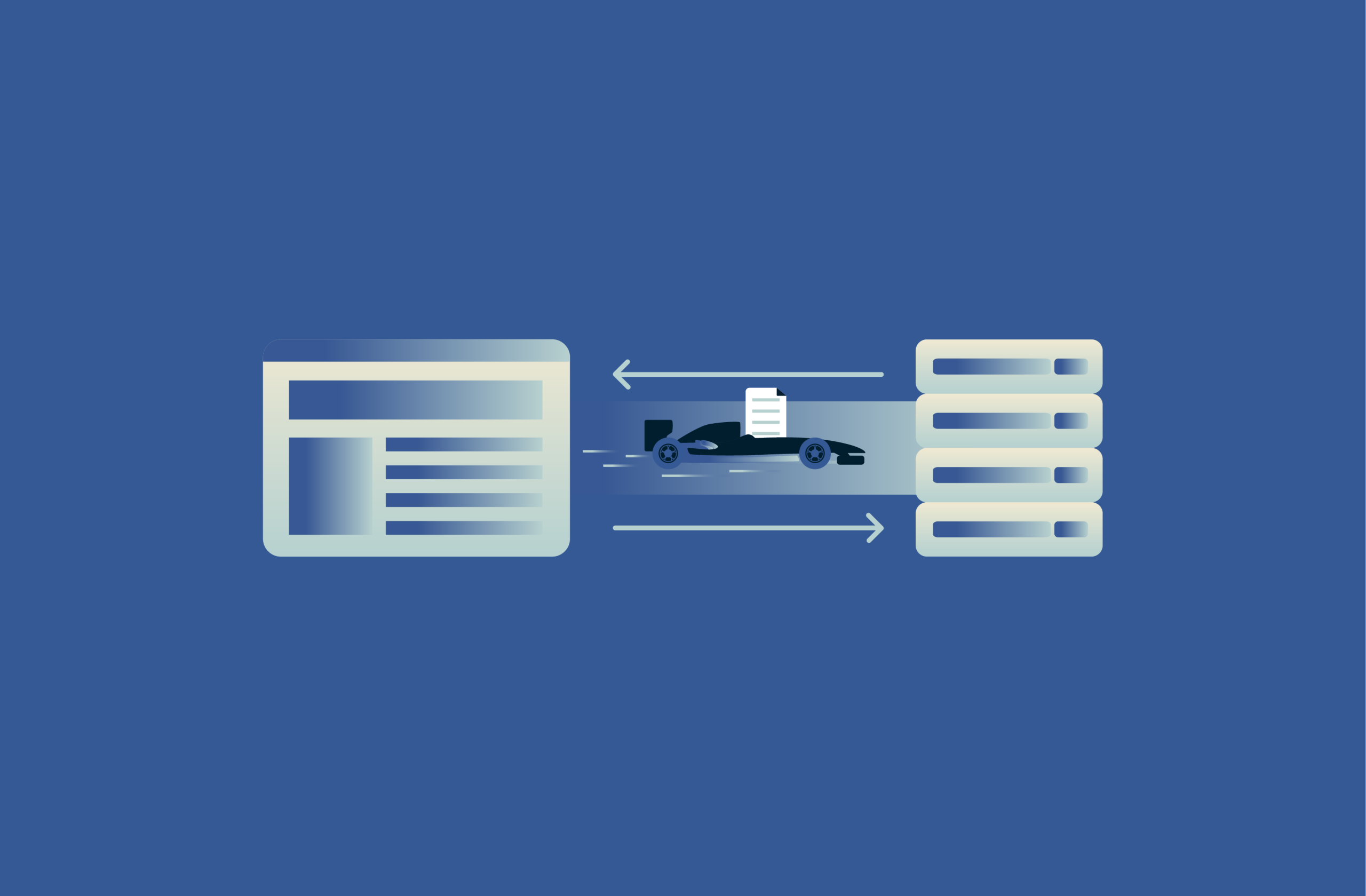
HTTP/2 is a modern version of the Hypertext Transfer Protocol (HTTP) protocol, which manages how browsers and websites exchange data. It was developed to improve the speed and efficiency of web communication as pages became more complex.
This guide covers the key features HTTP/2 introduces, the benefits they provide, and its limitations. It will help you understand how HTTP/2 improves web performance and what to consider when adopting it for your site.
What is the HTTP/2 protocol?
HTTP/2 is the version of the HTTP protocol that your browser uses to request and receive website content. Each time you visit a webpage, your browser communicates with the website’s hosting server (which stores and delivers the site’s files) using this protocol to fetch text, images, scripts, and other resources.
Why HTTP/2 was developed (from SPDY to HTTP/2)
Before HTTP/2, websites relied on HTTP/1.1, which became inefficient as pages grew more complex with images, videos, and scripts. To solve this, Google created SPDY (pronounced speedy), an experimental protocol that aimed to make loading faster and reduce delays.
SPDY introduced new techniques that inspired the development of HTTP/2. Eventually, the Internet Engineering Task Force (IETF) took SPDY’s core ideas and turned them into an open standard, leading to the official release of HTTP/2 in 2015. The goal was to modernize the web by improving performance, reducing bandwidth use, and making the browsing experience smoother for everyone.
How HTTP/2 works
HTTP/2 allows multiple requests to travel through a single connection side by side, which lets several resources load at the same time. Requests and responses are broken into small chunks called frames, and these frames can interleave freely, so the browser isn’t stuck waiting for one resource before fetching another. This removes the wait times associated with older methods that handled one request after another.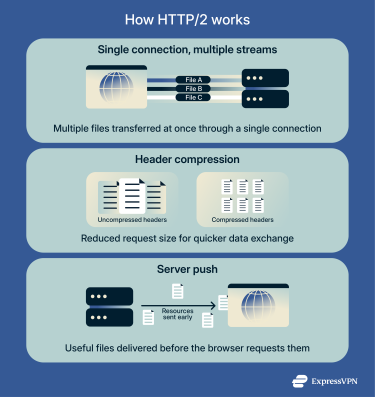
Key features of HTTP/2
HTTP/2 has several features that improve how data moves between browsers and servers and make communication faster, more efficient, and less prone to delays. Each feature works behind the scenes to reduce waiting time, lower bandwidth use, and support a smoother browsing experience.
Binary protocol explained
HTTP/2 uses a binary format. This means it communicates using precise patterns of ones and zeros, which is the basic form all computer hardware reads and writes. Because the browser can interpret these sequences immediately, the protocol runs quickly and avoids errors (that could happen in translations with previous versions). The strict layout of binary messages also helps the browser keep different pieces of data organized inside the same connection.
Multiplexing and faster loading
HTTP/2 introduces multiplexing, which allows many requests and responses to share a single connection at the same time. This reduces congestion and avoids unnecessary waiting. It also helps data flow more smoothly, keeping the connection stable even when a website is handling several pieces of content at once.
Header compression (HPACK)
HTTP/2 uses a dedicated header compression algorithm called HPACK. Headers contain small pieces of metadata sent with every request and response, and HPACK reduces their size by removing repetition instead of resending the same information each time. The system does this in two main ways:
- Common headers are stored in a shared list: Instead of sending the full text every time, the browser and server can just send a short reference to that header. Think of it like saying “use item #12 from the menu” instead of repeating the whole description.
- It remembers what was already sent: If you visit another page on the same site, your browser doesn’t need to send the same cookies or settings again. The server already knows them from earlier requests in the session.
HPACK also applies extra compression (Huffman coding) to make the data even smaller. Overall, this can shrink header size by about 30%, which speeds up page loading without changing what you see on the screen.
Server push for faster delivery
Server push lets a server send files to a browser before it asks for them. For instance, if a webpage always loads a certain image or style sheet, the server can send those automatically once it detects a request for the main page.
This anticipatory behavior prevents the browser from having to request each file individually. It’s like a restaurant bringing utensils and water before you order; the server knows you’ll need them anyway, so they save time by being proactive.
Benefits of using HTTP/2
HTTP/2 helps websites perform better, respond more smoothly, and deliver content more efficiently. These benefits affect everything from how quickly pages load to how users interact with them and even how search engines evaluate them.
Performance and speed improvements
HTTP/2’s multiplexing and header compression features make it easier to handle multiple requests at once without overloading the network.
As a result, websites can deliver pages and resources more consistently, even under heavy traffic. While not every improvement directly increases visible speed, the overall performance becomes steadier and more reliable, which helps maintain a smooth browsing experience.
Better user experience
HTTP/2 keeps data moving continuously, which makes pages react sooner to what users do. Content appears without long pauses, buttons respond more quickly, and elements on the page load in a steady flow instead of in stop-and-go bursts.
Because the protocol handles many resources at once through a single connection, the experience stays consistent on all kinds of networks, even slower mobile connections. Ultimately, HTTP/2 supports a more stable web experience where visitors can engage with content without interruptions or delays.
SEO benefits of HTTP/2
HTTP/2 supports many of the performance signals that search engines like Google watch closely. Faster delivery, smoother rendering, and more efficient data handling all contribute to stronger page experience metrics. When a site loads quickly and responds without hesitation, it’s more likely to meet the thresholds that search engines use to evaluate quality and relevance.
Why speed matters for rankings
Search engines track how quickly users can see and interact with a page. When a site takes too long to respond, visitors often leave before it finishes loading, which can increase bounce rates.
Search engines track these behaviors and may rank slower sites lower as a result. HTTP/2 helps websites avoid this by improving loading behavior at the protocol level, giving search engines another signal that the site is well-optimized and user-friendly.
HTTP/2 vs. HTTP/1.1: The main differences
While both protocols transfer data between browsers and servers, HTTP/2 changes how that exchange is handled. Its upgrades fix long-standing limits in HTTP/1.1 and deliver faster, more efficient, and more consistent performance.
Technical specifications compared
| Feature | HTTP/1.1 | HTTP/2 |
| Data format | Text-based communication that browsers read line-by-line | Binary format that computers process more efficiently |
| Connections used | Opens multiple connections to download website resources | Uses a single shared connection to handle all requests |
| Overhead | Higher overhead due to repeated connection handling | Reduced overhead through streamlined, continuous communication |
| Header handling | Doesn’t include compression by default | Includes built-in header compression (HPACK) for faster data transfer |
| Request prioritization | No native prioritization system | Supports prioritizing certain content to load faster |
Latency and resource management
Latency is the delay between sending a request and getting a response. In HTTP/1.1, this delay grows as more files are requested because each file often needs its own connection or waits in line. HTTP/2 solves the delay issue with multiplexing, which lets multiple files travel at the same time over a single connection.
This lowers waiting times and prevents network congestion. HTTP/2 can also prioritize important content (like the page layout) before less critical elements (like background images), making loading feel smoother and more predictable.
Limitations and compatibility issues
While HTTP/2 introduces major improvements over older versions of the protocol, it also comes with limitations that affect how well it works in real-world environments.
TCP limitations
HTTP/2 still depends on the Transmission Control Protocol (TCP), which can cause head-of-line (HOL) blocking. This means that if one packet of data is delayed or lost, every other packet behind it must wait, slowing down the entire connection.
Server push concerns
Server push is a feature meant to speed up delivery by sending files before the browser asks for them. However, in practice, it can waste bandwidth by pushing files the browser has already cached or doesn’t need. Because of this, many developers opt to disable this feature entirely.
Network tool compatibility problems
Compatibility also remains an obstacle. Some older firewalls and network tools aren’t fully optimized for HTTP/2, which can cause issues with encrypted traffic or downgrade connections to HTTP/1.1.
Browser and server support mismatch
Most major browsers, including Chrome, Firefox, Safari, and Edge, already support HTTP/2. But browser support alone isn’t enough. The server hosting the website must also be configured to use the protocol. If either side doesn’t support HTTP/2, the connection automatically falls back to HTTP/1.1 using backwards compatibility.
Why isn’t HTTP/2 used everywhere?
Although HTTP/2 offers clear performance benefits, not all websites or servers have moved to it. Many organizations still rely on older systems built around HTTP/1.1, and upgrading can require time, resources, and technical expertise. In some cases, the speed improvement isn’t significant enough for simpler or mostly static sites to justify the change.
Another adoption barrier is that HTTP/2 typically requires Hypertext Transfer Protocol Secure (HTTPS). To enable HTTPS, a website needs a Secure Sockets Layer (SSL) /Transport Layer Security (TLS) certificate, which is a small digital file that verifies the site’s identity and activates encryption between the server and your browser. This encryption works by scrambling the data as it travels, making it unreadable to anyone who tries to intercept it.
Without a valid SSL/TLS certificate, a site can’t create this secure connection or use HTTP/2, which is why many older or smaller websites still rely on older protocols.
Is HTTP/2 backward compatible?
Yes, HTTP/2 is backward compatible with HTTP/1.1, but there are trade-offs. When a connection falls back to HTTP/1.1, features like multiplexing, header compression, and prioritization are no longer used, so performance returns to the older, slower model.
Some servers also need extra setup to manage both protocols, especially when HTTPS is involved. In environments where both versions are active, troubleshooting can become more difficult because behavior may change depending on which protocol is currently in use.
Why HTTP/3 exists
HTTP/3 is the next major update to how browsers and servers communicate. Instead of using TCP like HTTP/1.1 and 2, it runs on Quick UDP Internet Connections (QUIC). This is a newer transport protocol designed to reduce delays, especially on unstable connections like mobile data or public Wi-Fi. HTTP/3 keeps advantages from HTTP/2 but improves how quickly connections recover when network conditions change.
Even with these benefits, HTTP/2 is still more widely used today because it’s already well-supported and works smoothly with existing infrastructure. Many servers and systems are still built around TCP, so upgrading to HTTP/3 can take time. As QUIC adoption grows, HTTP/3 will likely become the new standard, but for now, HTTP/2 remains the more common choice.
How to enable and test HTTP/2
Enabling HTTP/2 largely depends on your hosting environment, but most modern servers and providers already include support. If your site is running over HTTPS, there’s a strong chance HTTP/2 can be enabled.
Server and hosting requirements
Popular options like Apache, Nginx, and LiteSpeed all include native HTTP/2 support, though an update to the latest version might be necessary to access it. You’ll also need an SSL/TLS certificate, since most browsers only activate HTTP/2 over HTTPS.
Some older operating systems or server environments may require configuration changes, like enabling the Application-Layer Protocol Negotiation (ALPN) extension, which helps browsers and servers agree on using HTTP/2 during connection setup.
CDN and SSL/TLS considerations
If you use a content delivery network (CDN), enabling HTTP/2 can often be done directly through your CDN provider’s dashboard. Services like Cloudflare, Fastly, and Akamai have HTTP/2 enabled by default for all secure (HTTPS) traffic.
Since HTTP/2 typically requires SSL/TLS encryption, having a valid certificate is essential. Most hosting platforms and CDNs now provide free SSL certificates through services like Let’s Encrypt, making it simple to secure your site and take advantage of HTTP/2’s features without extra cost.
Tools to check if your website supports HTTP/2
There are several free tools that help you verify if your website is running on HTTP/2, such as HTTP/2 Test. You can also check directly in your browser.
Here’s how to do it in Mozilla Firefox:
- Open a website in Firefox.

- Press F12 or right-click and select Inspect to open Developer Tools.
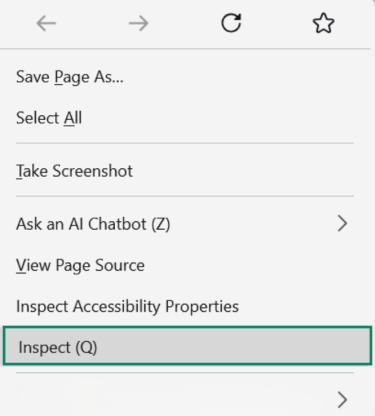
- Go to the Network tab and click the Reload button to refresh the page.

- Right-click on any column header and enable the Protocol column.
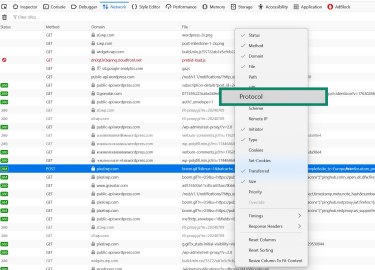
- Look at the Protocol version of your site.
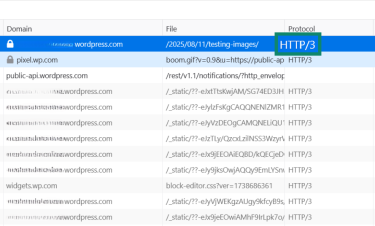
How HTTP/2 works with VPNs
HTTP/2 and virtual private networks (VPNs) serve different purposes and operate at different layers of internet communication. A VPN encrypts all your traffic at the network layer, creating a secure tunnel between a device and the VPN server. HTTP/2, on the other hand, works at the application layer, handling how data is sent between browsers and websites.
Because of this separation, they don’t directly interfere with or depend on each other. When you connect through a VPN, a browser can still use HTTP/2 to communicate with websites as long as both the server and browser support it.
Does HTTP/2 improve VPN speed?
Not directly. HTTP/2 can make websites load more efficiently by reducing overhead and allowing multiple requests to run in parallel. Those improvements help the browser and the server communicate faster, but they don’t change the underlying speed of the VPN connection itself.
A VPN adds encryption, routing, and sometimes extra distance to your traffic. HTTP/2 can’t remove those factors. What it can do is make web browsing feel smoother if the VPN connection is already stable, because it reduces the amount of back-and-forth your browser needs to load a page.
Security benefits of using HTTP/2 over VPN
When combined, HTTP/2 and a VPN can enhance overall security and internet privacy. HTTP/2 relies on HTTPS encryption to protect communication between a browser and the website, protecting the content of the web pages you visit.
A VPN protects all of your internet traffic, including that outside of your browser. This means every type of data your device sends, such as emails, file transfers, messaging apps, or background updates, is encrypted before it leaves your device and travels across the network.
This dual protection helps guard against interception, especially on public Wi-Fi networks. However, it’s important to note that HTTP/2 itself doesn’t add extra privacy features beyond HTTPS; it simply improves how encrypted data is exchanged. The VPN remains the main defense for keeping your browsing private.
Compatibility of VPN servers with HTTP/2
Most modern VPNs support HTTP/2 because the protocol operates above the VPN connection rather than inside it. The VPN manages encryption and routing at the network level, while HTTP/2 controls how data is formatted and delivered at the application level.
Since these layers don’t conflict, one doesn’t replace or disrupt the other. As long as the VPN allows standard HTTPS traffic, HTTP/2 will function normally through the encrypted tunnel with no additional configuration required.
The only exceptions might occur with older or highly restrictive VPN protocol setups that block certain ports or traffic types. In general, if the browser and destination website support HTTP/2, you can benefit from it even while connected to a VPN.
FAQ: Common questions about HTTP/2
What is HTTP/2 used for?
Hypertext Transfer Protocol 2 (HTTP/2) is used to make communication between web browsers and servers faster and more efficient. It handles how websites send and receive data by improving how requests are managed and reducing delays. It works by allowing multiple files to transfer at once, compressing data, and prioritizing important information so web pages load more smoothly.
How does HTTP/2 improve performance?
Hypertext Transfer Protocol 2 (HTTP/2) improves performance by changing how data travels across the internet. It replaces the old text-based system of HTTP/1.1 with a binary format that computers process more easily. It also speeds up loading with multiplexing, which lets browsers send and receive several pieces of data at the same time without opening new connections for each file.
Should I enable HTTP/2?
Yes, enabling Hypertext Transfer Protocol 2 (HTTP/2) is generally a good idea for most websites. It’s supported by all major browsers and can make sites feel more responsive with very little setup. Most hosting providers and content delivery networks (CDNs) already include HTTP/2 support, so you often just need to turn it on in your server or hosting panel.
What’s the difference between HTTP/2 and HTTP/3?
The main difference is that Hypertext Transfer Protocol 3 (HTTP/3) uses a newer transport protocol called Quick UDP Internet Connections (QUIC) instead of Transmission Control Protocol (TCP). This helps reduce delays and connection issues, especially on mobile networks. HTTP/2 relies on TCP, which means it can be slightly slower on unstable connections, but it remains widely used due to stronger compatibility with existing systems.
What are the compatibility issues with HTTP/2?
While Hypertext Transfer Protocol 2 (HTTP/2) works well in most environments, it can face issues with older servers that only understand HTTP/1.1. Some of its features, like server push, also cause problems, since they may send unnecessary data and waste bandwidth. In those cases, the connection automatically falls back to HTTP/1.1 to stay stable.
Does HTTP/2 make VPNs faster?
Not directly, since Hypertext Transfer Protocol 2 (HTTP/2) and VPNs operate at different layers of internet communication. A VPN encrypts all your traffic, while HTTP/2 manages how web data is sent and received. However, HTTP/2 can make browsing feel smoother over a VPN by organizing and compressing data more efficiently inside the encrypted tunnel.
Take the first step to protect yourself online. Try ExpressVPN risk-free.
Get ExpressVPN



